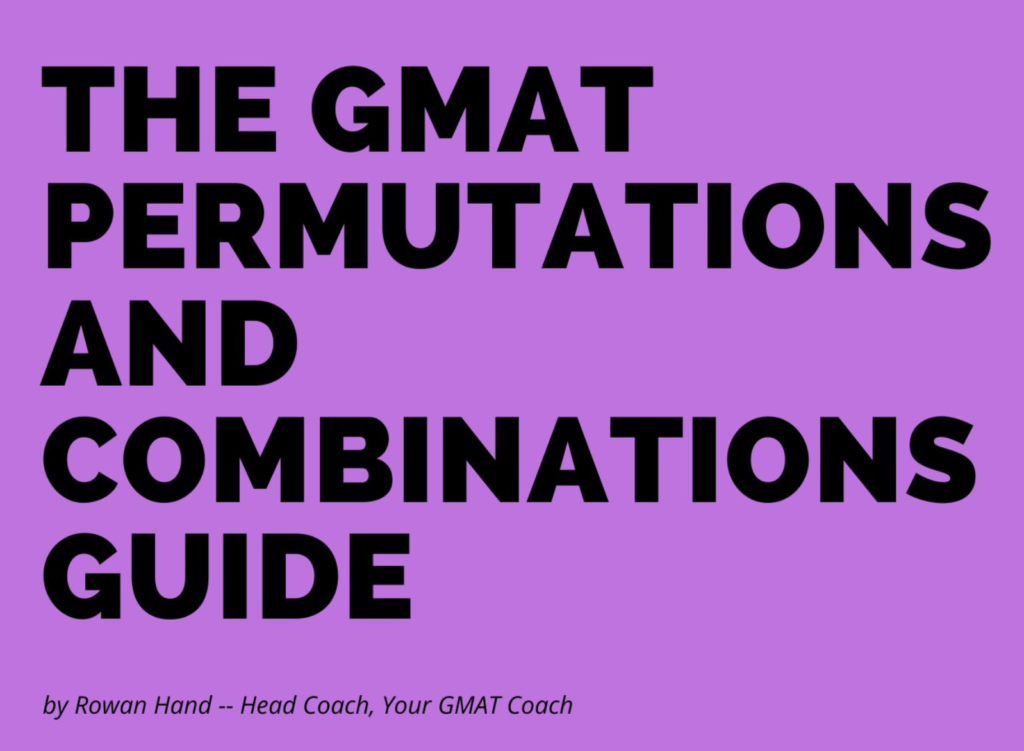The Ultimate Guide to GMAT Mixtures Questions
Download this entire article in PDF form here!
The beauty of Mixtures questions is that they are relatively simple once we get a couple of simple concepts straight.
One nice thing about Mixture questions is that they are best learned through example, so let’s jump right in.
Let’s take a hypothetical case where we have a 5-liter bucket that is full of a mixture that is a% Coca-Cola and a 2-liter bucket that is full of a mixture that is b% Coca-Cola. You can imagine that the rest of it is whatever you like.
First question: how much liquid do we have in total?
That is as simple as it seems: just the volumes of the full buckets added together:
5 liters + 2 liters = 7 liters
Now, let’s say that if we add the two buckets together, we’ll get a mixture that is c% Coca-Cola. Now we have as much as we need for a standard GMAT Mixtures setup:
(a/100)(5 liters)+(b/100)(2 liters) = (c/100)(7 liters)
And that’s really it. In a live question, you’d see it in a form where you’re given two variables and asked to find the third. That is, for example, you’re told a and c and have to work out b.
It’s also possible that you can use the same information to collapse one variable to find the ratio between two of the others. We’ll look at cases that do both of these things.
First, let’s establish the nice big “General Mixture Equation.” In essence, your mixture should look something like this, but this is more of a roadmap than a formula–sort of like putting linear equations into y=mx+b or quadratics into ax^2+bx + c =0.
General GMAT Mixtures Equation
(a/100)(X)+(b/100)(Y) = (c/100)(X+Y)
Now let’s move on to some worked Official examples.
Chapter 1: A Classic Mixtures Question
The classic “difficult” mixture question from the OG is this one. We don’t need to worry about answer choices here because mixture questions, should, in principle, be objectively solvable.
Seed mixture X is 40 percent ryegrass and 60 percent bluegrass by weight; seed mixture Y is 25 percent ryegrass and 75 percent fescue. If a mixture of X and Y contains 30 percent ryegrass, what percent of the weight of the mixture is X ?
In this case, it’s useful to write out all the details. As normal, put the percents into fractions as soon as possible:
X: 2/5 ryegrass, 3/5 bluegrass
Y: 1/4 ryegrass, 3/4 fescue
Total (X+Y): 3/10 ryegrass
What we’re looking for: X/(X+Y) as a percent (times 100)
t’s probably obvious by this point that we don’t need to worry about anything except the ryegrass. That is, ignoring everything else, we find this:
(2/5)X+(1/4)Y = 3/10(X+Y)
This will be enough to get X in terms of Y or vice-versa, so it will provide enough information to answer the question as phrased.
Multiply by 20:
8X+5Y=6(X+Y)
8X+5Y=6X+6Y==>2X=Y
This gives us enough to tell that X/(X+Y)=X/3X=1/3, or 33%.
Chapter 2: Another Classic Mixtures Question
Three grades of milk are 1 percent, 2 percent and 3 percent fat by volume. If x gallons of the 1 percent grade, y gallons of the 2 percent grade, and z gallons of the 3 percent grade are mixed to give x+y+z gallons of a 1.5 percent grade, what is x in terms of y and z?
In this case, of course, we have three percents. That doesn’t really change anything. We just add a z as well as the x and y that we had before. Because everything is a percent, we don’t need to write everything as divided by 100.
In other words, it’s straightforward enough to write 1x gallons as the amount of 1 percent, 2y gallons as the amount of 2 percent, and 3z gallons of the 3 percent grade. Note that the 1.5 will be much easier dealt with as 32.
Putting this into equation form, we find:
1x+2y+3z = (3/2)(x+y+z)
Multiply everything by 2 to make life easier:
2x+4y+6z = 3x+3y+3z
x = y+3z
And that, of course, is the suggested answer: x in terms of y and z.
Now let’s take a look at how a mixtures question might appear in a Data Sufficiency context.
Chapter 3: A Hidden DS Mixture
Here’s the question:
What fraction of this year’s graduating students at a certain college are males?
(1) Of this year’s graduating students, 33 percent of the males and 20 percent of the females transferred from another college.
(2) Of this year’s graduating students, 25 percent transferred from another college.
First, let’s look at the initial question: we need to know the fraction (as in ratio or percent) of the males among the graduating class. Note that this will be possible once we can reduce to two variables.
(In other words, to get a percentage, we don’t need to solve absolutely for each variable.)
First, let’s assume that we call the total males m and the total females f. We could, just to be perverse, call the females m and the males f, but we won’t.
That means that the figure we’re looking for is mm+f(all times 100, of course, but that’s an afterthought).
Therefore, Statement One gives us this information:

That isn’t, of course, enough to solve because we don’t know the information in the bottom row. INSUFFICIENT.
Statement Two tells us this:

This, of course, isn’t enough to solve because we have no information for the above rows. INSUFFICIENT.
This, of course, isn’t enough to solve because we have no information for the above rows. INSUFFICIENT.
If we put the two statements together:

Now we’re talking. Look at the transfer column now–obviously you could use the NOT Transfer column as well, but the math is harder so just do the simple way, yes?–and you’ll see that you get this equation:
Now we’re talking. Look at the transfer column now–obviously you could use the NOT Transfer column as well, but the math is harder so just do the simple way, yes?–and you’ll see that you get this equation:
(1/3)m+(1/5)f = (1/4)(m+f)
Of course you’ll notice that this has become effectively just a dressed-up mixtures question. Now it’s just an issue of solving for m in terms of f (or vice-versa) and figuring out what the ratio is.
The easiest way to do this, of course, is to multiply everything by the Least Common Multiple of the 3, 4, and 5, which is 60. We then find this:
20m+12f = 15(m+f)
5m=3f
At this point, it’s worth refreshing what we’re actually looking for. Remember that we need it in terms of m, so we need to solve the preceding equation for f:
f = (5/3)m
Substituting this into m/(m+f), we see:
m/(m+f) = m/(m+(5/3)m) = m/(8/3m)
This shakes out to 38, telling us that 37.5% of the graduates are men.
Conclusion
All you really need to do is to remember that a GMAT mixtures question should take the basic form described above:
(a/100)(X) + (b/100)(Y) = (c/100)(X+Y)
As long as you can get it to fit into that form reasonably well, you’ll be in good shape. If not, well, it’s probably not a Mixtures question…
Download this entire article in PDF form here!








